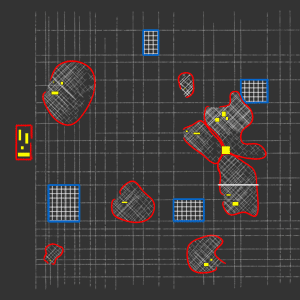If you continued from last week Urban Landscape ‘Megalopolis’, you can continue. If you dropped by, please regard that this sequence started with favela. If you are lost, start again with the beginning called favela. For subscribers I have attached the two images as a cover.

[display_podcast]
Auf  könnt Ihr Mein Vorschlag und FavelaRadio hier nachlesen.
könnt Ihr Mein Vorschlag und FavelaRadio hier nachlesen.
2 thoughts on “My Proposition: A RadioProductionCentre”
Leave a Reply
You must be logged in to post a comment.
architect –
Last week a “street radio” application by Hive Networks (GB) ended in Dortmund near the so called “U-Tower”, the former brewing highrise that is now transformed into a centre of culture and art for the Ruhr2010 – the European cultural city in 2010 will be the Ruhrgebiet.
It was possible to follow and participate in the installation “Field Amplification” by four stations – just bring your radio or bluetooth-cell-phone with you and you can switch into the Art of the Electomagnetic Society.
Hivenetworks seek to combine free wireless community networks with content and services supplied by individual users and groups. In existence since 2005, the developer group aims at building a toolkit for the creation of freely configurable communication architectures, which allow one-to-one, one-to-many, and many-to-many communications by linking different protocols such as W-LAN and Bluetooth with the Internet and readily available user devices like mobile phones. The ingenious combination of those technologies allows the creation of new links and new interfaces connecting data spaces to homes, public buildings, and the street. It does so by seeking to use low-cost, mass-produced devices as well as free and open-source software for creating systems that open up new creative possibilities, espacially for participatory art practices, while at the same time subverting existing techno-social hegemonies in a number of ways. Hivewares – the technological systems created by Hivenetworks – subvert the dominance of proprietary networking models such as mobile phone networks, undermine broadcasting systems by using extreme narrowcastings, and break through cost barriers in making available “augmented” reality concepts at a very low cost.
Here in Dortmund, four stations shoulder different workloads. One station is busy scanning the area for Bluetooth-enabled mobile devices and then sending them programme information. Another station receives input from the public via mobile phones. Users can send text messages via SMS, or recordings of the spoken word via their mobile phones, all which are subsequently collated into a radio stream, thereby creating a radio format reflecting the ideas of the public about future uses of the U-Tower. The two other stations are more conventional short-range radio stations, with one station broadcasting the radio play “The Zone” and the other station paying sound artworkds by exhibition artists.
julakim is replying:
Thank you for the comment. So it is already in action somewhere. The idea of the bluetooth-net could be good solution for the satellites. I am sure that there are a lot of other cities also developing such ideas. Let s see when they will find their way to RadioFavela.